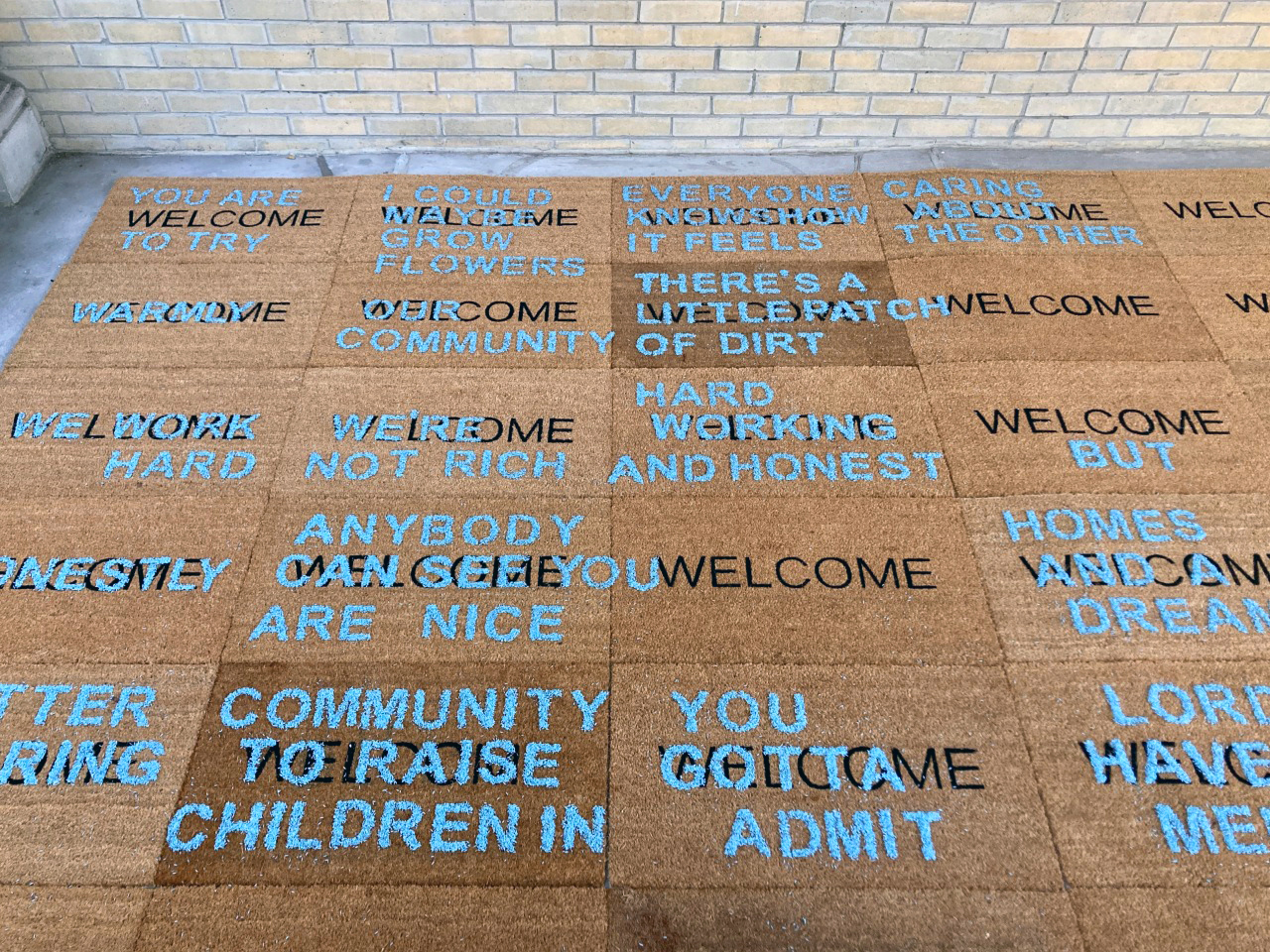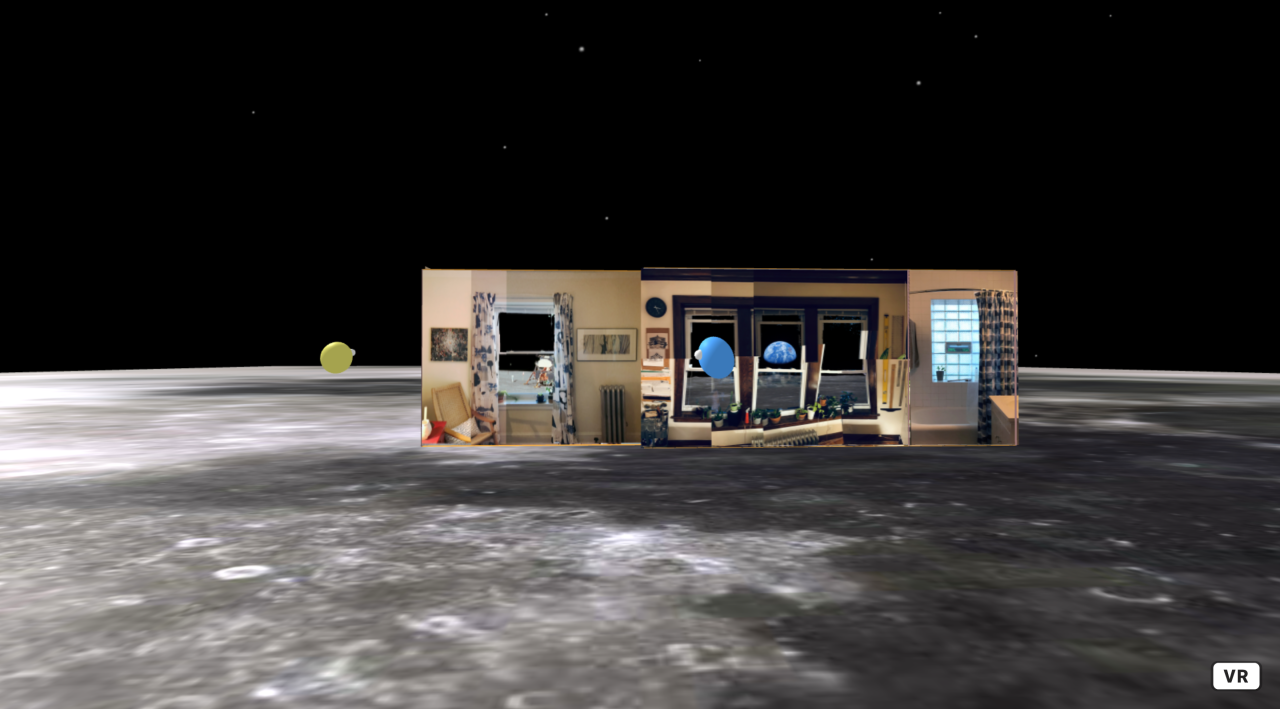



untitled
(“radical hospitality” and its constant gardeners)
2021
97”x322”
The artwork is an edge-to-edge floor installation of coir fiber door mats, arranged in a grid with printed text on each mat stating “WELCOME” in black ink. Subtexts and less kind sentiments are also printed within the fibers of the mats in flourescent blue fertilized grass seed, revealing the obscured language, rituals of hospitality, and passive-aggressive behaviors that historically and today remain as constant gardeners of white supremacy, and veiled gatekeepers to resources and equity.
This work was commissioned for curator Asha Iman Veal’s exhibition RAISIN, a partner program of the Chicago Architecture Biennial. The exhibition took place within a three-story house on a residential block in a formerly all-white, now integrated, neighborhood in Chicago. Inspired by themes from the Lorraine Hansberry play A Raisin in the Sun (1959), the exhibition features artworks created by 37 Chicago and international artists, offering local and global perspectives on “home.”
The exhibition is structured on three levels, in direct relation to the architecture of the dilapidated mansion: artists on the first floor offer direct responses to the Hansberry play; the second-floor artworks bring forth nostalgic memories of home; and the third-floor installations interrogate home as a place of identity-based violence. Each artist explores wider themes as well, such as first-time homeownership, gender dynamics within communities of color, generational dreams, and more.
In 1959, Hansberry’s original A Raisin in the Sun debuted on Broadway. In this seminal work, Hansberry wrote about the Youngers, a fictional Black American family in Chicago forced to debate their options for self-determination within a race-biased country, and whether to move to an affordable yet segregated neighborhood where they will not be welcome.
For the past 60 years the play has been produced in cities around the world—shifting in nuance based on the context of various locales. From the historical violence of residential segregation within the United States, to widespread migration opposition across Europe, to regionalism and class inequality in China. Making history, A Raisin in the Sun was translated into 30 languages soon after its first staging.
Hansberry’s narrative serves as the RAISIN inspiration, as well as a departure point for exploring a multiplicity of experiences and conversations.
https://raisin6018.org
Image Credit: Kim Becker


















